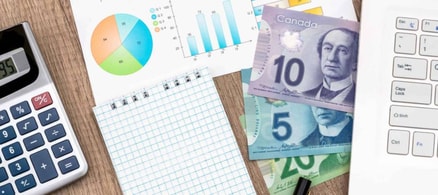Meta Platforms (FB)

This one shouldn’t come as a surprise. The company formerly known as Facebook is one of the main reasons why everyone is talking about metaverse today.
As it stands, Meta largely remains a social-media company. Facebook’s monthly active users grew 6% year-over-year to 2.91 billion worldwide in Q3.
Factoring in Meta’s other platforms — namely Instagram, Messenger and WhatsApp — the number of active users on at least one product totaled 3.58 billion.
That said, the company has many endeavors beyond social media, including virtual and augmented reality headsets and smart glasses. It sees the metaverse as “a hybrid of today’s online social experiences, sometimes expanded into three dimensions or projected into the physical world.”
Shares have climbed 24% this year to US$326 apiece. If that’s too steep, you can use a popular investing app to buy fractions of shares with as much money as you are willing to spend.
A better online investing experience
Easy to use and powerful, Qtrade's online trading platform puts you in full control with tools and resources that help you make well-informed decisions.
Invest NowNvidia (NVDA)

With the chip shortage expected to last well into next year — pinching the supply of new cars and other devices — chipmakers continue to fire on all cylinders.
Nvidia shares have more than doubled year-to-date.
And since the company is famous for its powerful graphics chips, Cramer sees Nvidia as a key metaverse play.
In the three months ended Oct. 31, Nvidia’s revenue soared 50% year-over-year to a record US$7.1 billion. Adjusted earnings came in at US$1.17 per share, up 60% from a year ago.
Growth is expected to continue. For the current fiscal quarter, management is projecting US$7.4 billion in revenue.
Roblox (RBLX)

This game developer enables users to make block-based worlds and games without needing to know how to code. It also allows creators to get paid through an in-game currency called Robux.
In Q3, the platform had 47.3 million average daily active users, up 31% year-over-year. Revenue rose 102% year-over-year to US$509.3 million.
Cramer likes Roblox because it is “a lot of fun” and has its “own internal metaverse already.”
Roblox went public in March through a direct listing and closed at US$69.50 on its first day of trading. Shares surged to over US$140 apiece in November but have since come back down to around US$100.
If you don’t like that kind of roller coaster ride, remember you can always build a diversified portfolio of blue-chip stocks just by using your “spare change.”
Grow Your Savings Effortlessly with Moka
Automate your savings with every purchase and watch your money multiply. Moka rounds up your transactions and invests the spare change. Start building wealth effortlessly today. Join thousands of Canadians embracing financial freedom with Moka
Sign up nowUnity Software (U)

This video game software developer recently acquired the visual effects studio behind the Avatar and Lord of the Rings movies — and Cramer is keen.
“Imagine being able to be an avatar of the person who made up the Avatar,” he said on his show.
Unity shares had a solid run from May to November but have pared some of the gains in recent weeks. Trading at US$136 per share, the stock is actually down 5.5% year to date.
That could give contrarian investors something to think about, especially considering how fast the business is growing.
In Q3, Unity earned US$286.3 million of revenue, representing a 43% increase year-over-year. The company also generated US$34.2 million of free cash flow, which more than tripled the US$10.9 million it generated in the year-ago period.
Looking beyond the stock market

While they’re certainly exciting, metaverse plays remain highly speculative. Even Wall Street experts aren’t right 100% of the time.
Don’t forget that diversification is key — and you don’t have to stay in the stock market to get it.
If you want to invest in something with high return potential that’s insulated from the violent swings of the stock market, consider this overlooked asset: fine art.
Contemporary artwork has outperformed the S&P 500 by a commanding 174% over the past 25 years, according to the Citi Global Art Market chart. And on a scale of -1 to +1 (with 0 representing no link at all), their correlation was just 0.12 over the past 25 years.
Investing in art by the likes of Banksy and Andy Warhol used to be an option only for the ultra rich, like Cramer. But with a new investing platform, you can invest in iconic artworks, too, just like Jeff Bezos and Bill Gates do.
Sponsored
Trade Smarter, Today
With CIBC Investor's Edge, kick-start your portfolio with 100 free trades and up to $4,500 cash back.







